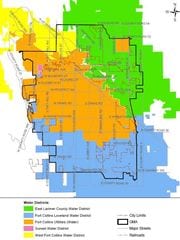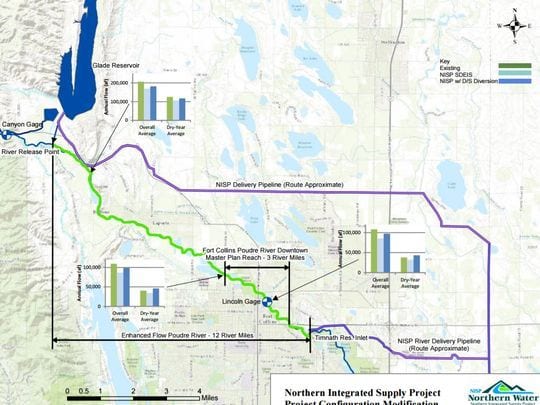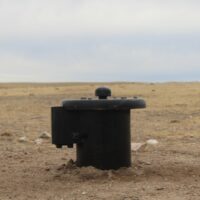Photo: Fort Collins Utilities
WRITTEN BY
Kevin Duggan, The Coloradoan
Changes in how Fort Collins lets developers tap into the city’s water system are expected to increase the cost of building new homes and businesses.
Although the availability of affordable housing is a community concern, higher development fees are needed to pay for the infrastructure and water needed to accommodate growth in the decades to come, city officials say.
“The goal here really is to generate adequate funds or water rights to provide a reliable water supply,” said Donnie Dustin, water resources manager with Fort Collins Utilities, during a recent City Council meeting.
City Council is scheduled Tuesday to give final consideration of an ordinance that would make several changes to the city’s “raw water requirements.”
When building a project, developers must bring sufficient water rights from select sources to meet the development’s needs and dedicate them to the city. Developers also have an option to pay cash in lieu of water rights.
Under the new system, the cash-in-lieu payment would increase from $6,500 for one acre-foot of water to $16,700. An acre-foot of water is enough to meet the annual needs of three to four urban households.
The new system also would require less water dedication, depending on the type of development, to reflect a continuing decline in indoor water consumption. It also would recognize the difference in consumption between a one-bedroom unit and a five-bedroom unit, Dustin said.
The cost of supplying water to a typical new single-family home would increase from $4,300 to $9,000 under the revised rates. A tap for a multi-family development would increase from $2,800 to $3,900 per unit.
The cost of taps for commercial developments would increase from $5,900 for a 0.75-inch line to $15,100; the cost of a 1-inch line would go from $19,500 to $37,800.
The revised system has its critics. Some developers and affordable housing advocates say the increased costs will only add to the soaring price of housing.
However, local environmentalists say the cash-in-lieu rate should be even higher to reflect the rising cost of water rights.
The city already owns most of the water it needs and has shown little justification for raising water costs to developers, said Greg Miedema, executive officer of the Northern Colorado Home Builders Association.
Would-be homeowners are struggling to find starter homes they can afford, he said.
“For every thousand dollars the price of a house goes up, about 950 people are priced out … they can’t qualify,” Miedema said.
Longtime local developer Gino Campana, a former City Council member, said periodic increases in water costs, such as 3 or 5 percent every few years, would be understandable. But more than doubling the cost at one time is too much.
“That’s hard for me to stomach,” he said. “The city is sitting on a lot of water. It probably has enough water to satisfy its needs through build-out.”
Even with the increase, the city’s proposed $9,000 charge for supplying water to a single-family home would be less than charges of other local providers.
The Fort Collins-Loveland Water District, which covers most of south Fort Collins, charges $25,000 for a single-family home. Wellington charges $19,300.
City development fees affect the cost of building a home, council member Ross Cunniff said, but they are not responsible for high housing costs. Market forces, as in supply and demand, drive the cost of housing, he said.
Growth Pressure

Photo: Fort Collins Utilities
Fort Collins Utilities expects the population in its water service area to increase by 45,000 by 2065.
About $129.9 million in additional funding will be needed to address the growth, Dustin said. About $63.9 million would be for infrastructure, primarily for storage.
The city is going through the costly process of getting permits to expand Halligan Reservoir for several years. A draft environmental impact statement on the project is expected to be released next year.
An additional $25.5 million is expected to be needed to buy additional water rights. Another $40.5 million is expected to come from new customers buying into the city’s existing system and water portfolio, Dustin said.

 Aquifers, or underground reserves of water, are located throughout Colorado, and increasingly cities, farmers, and landowners are turning to them to provide usable water. In Colorado, aquifers are pumped for crop irrigation or for drinking and household use.
Aquifers, or underground reserves of water, are located throughout Colorado, and increasingly cities, farmers, and landowners are turning to them to provide usable water. In Colorado, aquifers are pumped for crop irrigation or for drinking and household use.